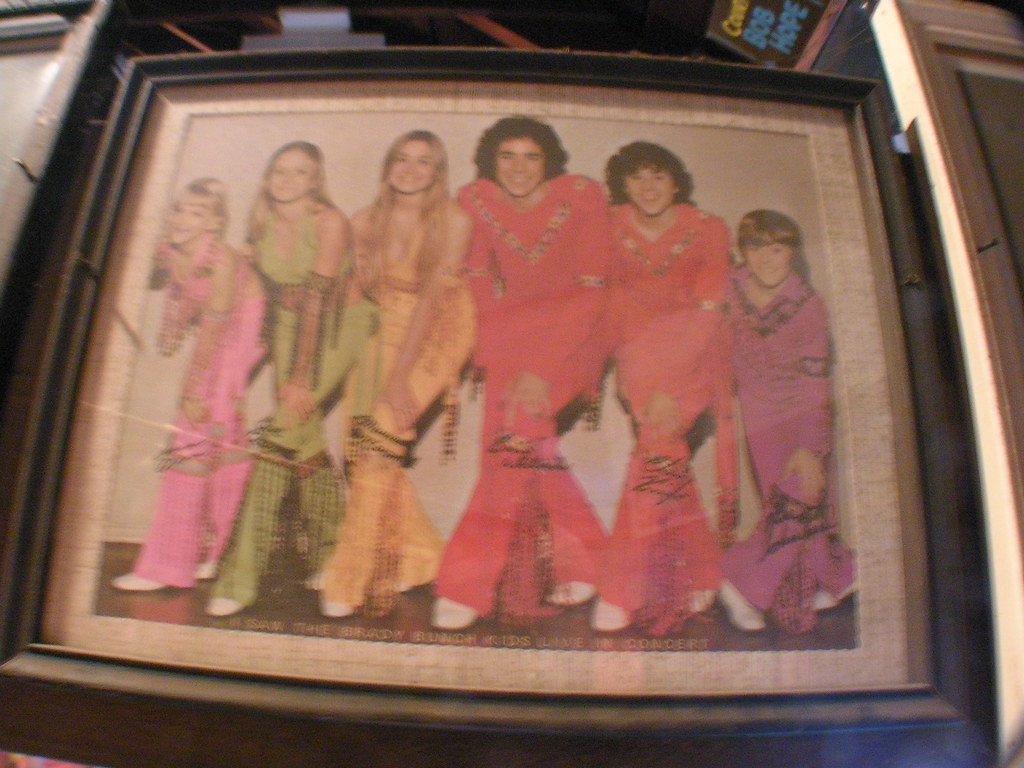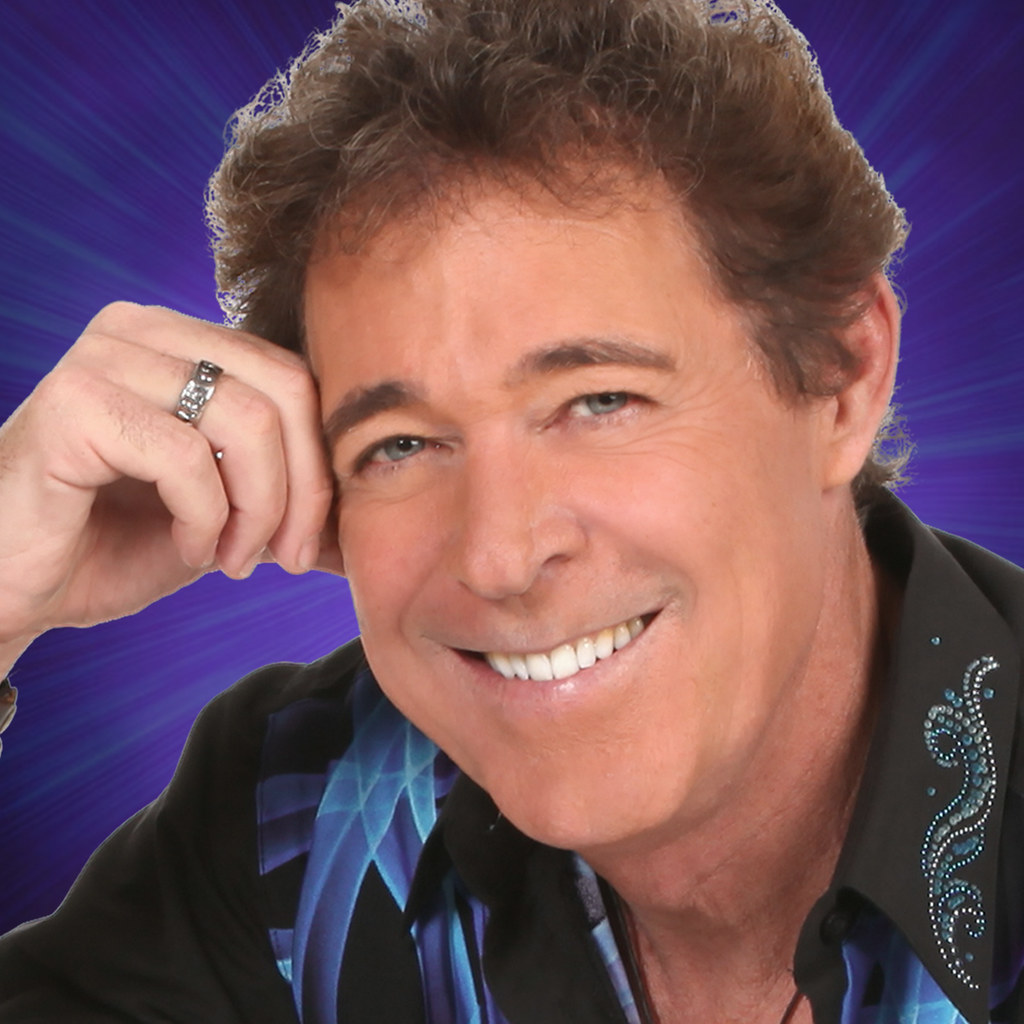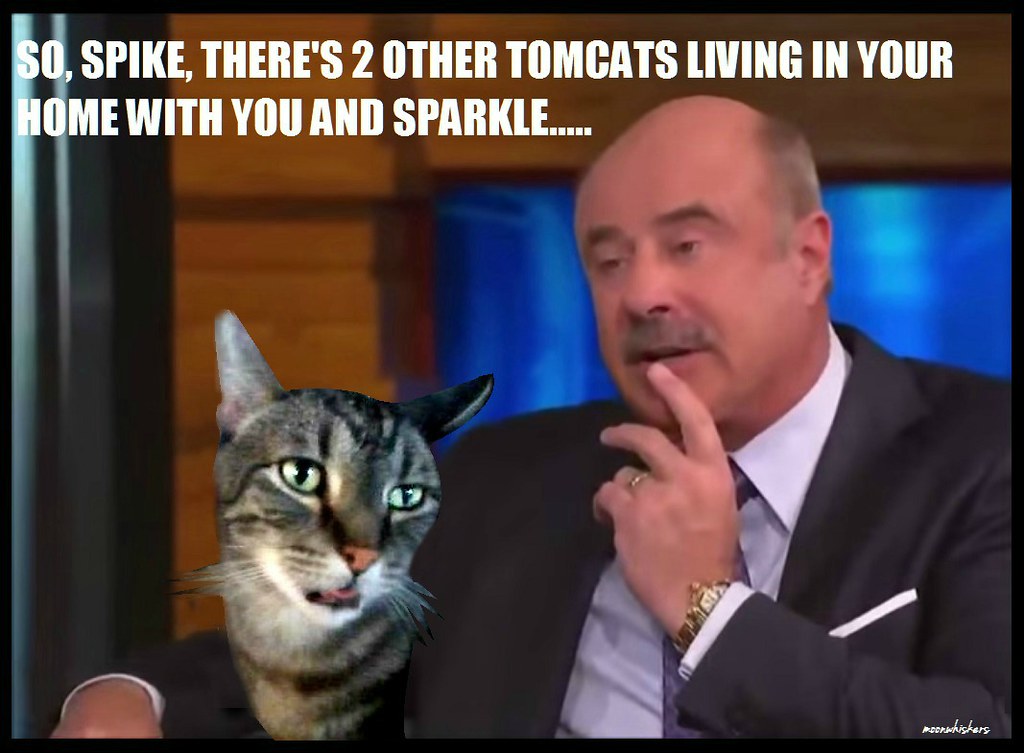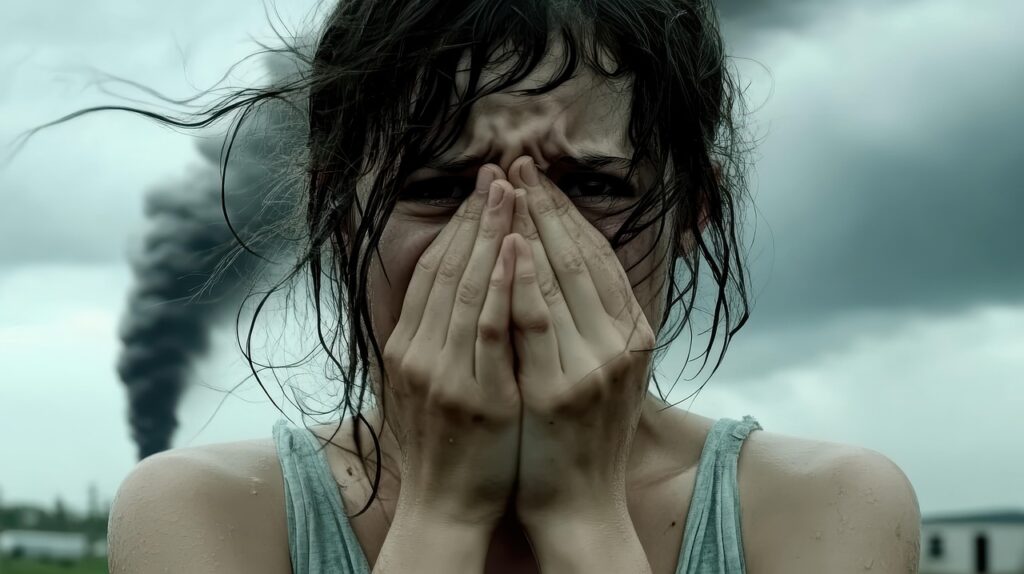Maureen McCormick, forever etched in the public consciousness as the eternally optimistic and seemingly perfect Marcia Brady, embodied the quintessential all-American girl for millions of television viewers. From 1969 to 1974, she graced screens as the eldest daughter of the blended Brady clan, a family unit so idyllic it became the benchmark for wholesome television. Yet, beneath the cheerful veneer of “Marcia, Marcia, Marcia,” lay a deeply complex and often troubled reality, a stark contrast to the sun-drenched, suburban fantasy she portrayed.
For decades, fans have clung to the image of the golden-haired teenager who flawlessly navigated sibling rivalries, high school crushes, and the occasional football mishap. But as McCormick herself bravely revealed in interviews and her candid memoir, “Here’s the Story: Surviving Marcia Brady and Finding My True Voice,” her journey was far from the simple, heartwarming narrative of *The Brady Bunch*. Her life off-screen was a tumultuous landscape of personal demons, profound struggles, and a desperate search for identity beyond the shadow of her iconic character.
This in-depth exploration delves into the foundational years of Maureen McCormick’s life, pulling back the curtain on the formative experiences that shaped her, the intense pressures of child stardom, and the initial, heartbreaking descent into the self-destructive behaviors that would define much of her early adulthood. We will uncover the stark disparities between her public persona and private pain, tracing the poignant narrative of a young woman grappling with an unstable home life, the intoxicating allure of Hollywood, and the heavy burden of a television legacy.

1. **The Fictional Family vs. Reality: A Deep Divide** Maureen McCormick’s public image was inextricably linked to the picture-perfect world of *The Brady Bunch*, where she was enveloped in what appeared to be the world’s most supportive and normal family imaginable. Her portrayal of Marcia Brady offered a comforting vision of domestic harmony, a stark and almost cruel counterpoint to the profound disarray that characterized her actual home life. This stark dichotomy between fantasy and reality would become a defining struggle for the young actress, leaving her to grapple with the emotional fallout of such a profound contrast.
In tragic truth, Maureen McCormick’s real-life family was far from the idealized version seen on television, riddled with issues that were certainly not fit for family viewing. The stability and warmth of the Brady household stood in stark opposition to a childhood marked by mental illness within her family, coupled with the unsettling presence of an unstable father. These deeply challenging circumstances created an environment of unpredictability and emotional strain, making the escape into her fictional family on set all the more poignant for her.
Adding another layer of complexity to her already difficult upbringing was a deeply buried family secret, a truth that, as she would later discover, was poised to shatter any remaining semblance of normalcy McCormick desperately tried to hold onto. Landing the role of Marcia on *The Brady Bunch* at least afforded her the temporary solace of believing in a functional, loving family, if only for the five short years the series ran. This brief respite, however, was merely a pause before the weight of her personal reality would inevitably resurface, leaving a lasting impact on her delicate psyche.

2. **From Child Prodigy to Marcia Brady: A Star is Born** Even from a tender age, Maureen McCormick possessed an undeniable charm and eye-catching beauty that hinted at a future in the spotlight. Born on August 5, 1956, into a family already comprising three boys, her arrival brought joy to Irene and Richard McCormick, completing their family of six in the San Fernando Valley of Los Angeles. Her parents quickly recognized her unique appeal, wasting no time in showcasing their beautiful baby girl to the world, setting the stage for an early entry into the entertainment industry.
At merely six years old, McCormick received her first real taste of celebrity when she competed in the San Fernando Valley Beauty Pageant, snagging the coveted top prize. This early success, however, was secondary to the far more significant outcome: she caught the discerning eye of a talent agent. This agent saw beyond a mere pageant winner, recognizing in little McCormick the potential for a genuine star, thus opening the doors to what would become a formidable career in television and advertising.
Her burgeoning career quickly led to a national commercial for Mattel in 1964, where an eight-year-old McCormick notably introduced the company’s new recycling program for Barbies, asking audiences, “But what do I do with my old Barbie?” Following this, she secured guest spots on popular sitcoms like *Bewitched*, portraying a child witch, and also appeared on *I Dream of Jeannie* and *My Three Sons*. Further solidifying her early connection with Mattel, she was later chosen to be the new voice of the revamped Chatty Cathy doll, lending her distinctive voice to phrases such as, “please take me with you” and “I hurt myself,” an important stepping stone before her true breakthrough.
The pivotal moment arrived in 1969 when Sherwood Schwartz, the visionary creator behind *Gilligan’s Island*, embarked on casting a new show centered around the novel concept of a blended family. Out of an astounding 264 hopefuls, a then 12-year-old Maureen McCormick delivered an audition that was nothing short of remarkable. She effortlessly “nailed” the part of Marcia Brady, the eldest daughter, securing a role that would not only launch her into superstardom but also profoundly shape, for better or for worse, the entire trajectory of her life and identity.

3. **Forbidden Affections: Romances Behind the Brady Set** Despite playing siblings, the undeniable tension between Maureen McCormick and Barry Williams, who portrayed her on-screen brother Greg, blossomed into a passionate fling behind the scenes. Both actors have candidly confirmed the romance, a secret affair that added a layer of clandestine excitement to the otherwise wholesome set of *The Brady Bunch*. This budding relationship defied the carefully curated family dynamic, hinting at the very real adolescent hormones raging among the young cast members as the show progressed.
Despite playing siblings, the undeniable tension between Maureen McCormick and Barry Williams, who portrayed her on-screen brother Greg, blossomed into a passionate fling behind the scenes. Both actors have candidly confirmed the romance, a secret affair that added a layer of clandestine excitement to the otherwise wholesome set of *The Brady Bunch*. This budding relationship defied the carefully curated family dynamic, hinting at the very real adolescent hormones raging among the young cast members as the show progressed.
The intensity of their attraction reached a peak one day when, in Williams’ dressing room, the pair found themselves in a desperate embrace, tearing at each other’s clothes. This moment of escalating passion, however, was abruptly halted by a knock on the door, preventing them from going further. The situation was made doubly inappropriate not only by their on-screen sibling relationship but also by Williams’ own reported “awkward crush” on Florence Henderson, who played their TV step-mom, adding another layer of complex, forbidden desire to the set’s atmosphere.
In a revelation that further underscored the turbulent emotional landscape of her youth, McCormick admitted in her memoir, “Here’s The Story: Surviving Marcia Brady and Finding My True Voice,” to harboring another highly secretive crush: on Robert Reed, the actor who played her father, Mike Brady. This admission highlighted a youthful naiveté, as she was unaware at the time that Reed was gay. This particular crush added another layer of unconventional and unrequited affection to McCormick’s developing personal life amidst the rigid structure of her television family.

4. **The “Nose” Heard ‘Round the World: Reality Mimicking Art** In 1973, Maureen McCormick experienced a minor car accident that left her with a very visible injury to her nose, an unexpected development that presented a challenge for the *Brady Bunch* production team. The mark was too prominent to simply ignore, necessitating a creative solution to maintain the continuity of the show’s narrative. This real-life mishap would soon become one of the most memorable and referenced plotlines in the series’ history, further blurring the lines between McCormick’s personal experiences and her character’s on-screen life.
Responding swiftly to the actress’s injury, the writers had to jump into action, crafting an entire episode around the incident to explain Marcia’s newly acquired facial wound. This creative improvisation resulted in the iconic 1973 episode, “The Subject of Noses,” which became one of *The Brady Bunch*’s most enduring and frequently referenced installments. The premise saw her on-screen brother, Peter, accidentally hitting Marcia in the face with a football, a scene that had to be performed for real, according to McCormick.
The episode’s central moment, where Marcia is struck by the football, followed by her unforgettable scream, “Oh my nose!”, resonated deeply with audiences and became an instant classic. McCormick herself described the grueling process of filming, noting that “Practically everyone on the set, from the prop man to Lloyd Schwartz, threw a Nerf football at my face, trying to get the perfect spot,” on top of her existing injury. This particular scene has transcended the show itself, spawning countless memes and GIFs that continue to circulate, testament to its indelible place in pop culture and a poignant symbol of McCormick’s intertwined identities.

5. **A Star’s Descent: The Onset of Drug Addiction** By 1975, with *The Brady Bunch* no longer actively America’s favorite family, Maureen McCormick found herself at a precarious juncture. At 19 years old, she was rich, famous, and suddenly liberated from the structured confines of the show. This newfound freedom, coupled with the absence of the “perfect family” environment she had inhabited on screen, proved to be a dangerous cocktail. The transition from child star to young adult in the glittering, yet perilous, landscape of Hollywood set her on a destructive path, as she began to immerse herself in the city’s notorious party scene.
McCormick openly admitted that her partying quickly escalated, leading her down the dangerous road of drug use, particularly an “all-encompassing” addiction to cocaine. She recounted how “everything was going up her nose,” indicating the severe grip the substance took on her life. While she noted that the show wasn’t directly responsible for her drug use, she acknowledged it placed her in situations where she was ill-equipped to handle sudden fame, intense pressure, and the lack of a robust support system, all of which exacerbated her struggles.
McCormick recognized her own “very addictive personality,” a predisposition she believes she would have fallen into regardless, given her brother’s similar struggles and the experimental nature of the 1970s. However, the circumstances of her post-Brady life accelerated this descent. She found herself seeking “refuge in seemingly glamorous cocaine dens above Hollywood,” believing she would find answers there. Instead, as she powerfully articulated in her autobiography, she was “simply running farther from myself. From there, I spiraled downward on a path of self-destruction that cost me my career and very nearly my life.”
Her addiction reached a devastating low point during the filming of the 1981 spin-off series, *The Brady Brides*. Despite the professional obligation, McCormick’s substance use continued to plague her, even leading to instances where she didn’t show up for work, raising producers’ suspicions. It was a period marked by a desperate struggle to maintain a semblance of normalcy while caught in the powerful throes of her addiction, signaling a critical turning point where the consequences of her choices began to manifest acutely in her professional life.
6. **The Darkest Hour: Tragic Repercussions of Addiction** As Maureen McCormick’s drug addiction intensified and her finances inevitably ran out, her desperate need for her substance of choice drove her to unthinkable acts. In a heart-wrenching revelation from her book, she admitted to trading her body for drugs, a grim testament to the utter grip her addiction held over her. This level of desperation led her into morally compromising situations, recalling spending time with unsavory individuals, including a drug dealer named Bill, in a world where her existence revolved solely around securing her next high.
Her account describes crashing at her dealer’s house on the infamous Wonderland Avenue, an address synonymous with the darker side of Los Angeles. There, amidst a group of individuals equally ensnared by addiction, drugs and poor decisions were plentiful. McCormick candidly stated, “We were high all the time there. We were one another’s friends, lovers, and torturers.” This environment fostered a dangerous cycle, where basic human needs and moral boundaries were tragically blurred, all in pursuit of the next fix.
Beyond the financial and moral compromises, McCormick’s destructive period of partying and drug use led to even more devastating personal consequences. She candidly revealed that between the ages of 18 and 20, she ended a pregnancy three separate times. Reflecting on this painful period, she later attributed these reckless decisions to her drug use, calling herself “careless.” This tragic toll underscored the profound and enduring damage her addiction inflicted, representing the ultimate, heartbreaking price she paid for a wild and damaging youth, a past she struggled deeply to reconcile with.
Having navigated the perilous waters of early fame and the dark abyss of addiction, Maureen McCormick stood at a precipice. The wholesome image of Marcia Brady, once a golden cage, had been shattered, revealing a woman grappling with profound personal demons. Yet, the narrative of McCormick’s life was not destined to end in tragedy. Instead, it unfolded into a remarkable journey of self-discovery, resilience, and an unwavering quest for redemption, ultimately allowing her to embrace her complex identity beyond the shadow of her most famous role.
7. **The Unforgiving Shadow of Marcia: Typecasting and Missed Opportunities** As the glittering façade of *The Brady Bunch* era faded, Maureen McCormick found herself confronting the harsh realities of Hollywood’s typecasting machine. The industry, ever eager to compartmentalize, struggled to see beyond the sunny, innocent Marcia Brady. This unwavering perception proved to be a formidable barrier, hindering her attempts to transition into more serious, adult roles and casting a long, unforgiving shadow over her burgeoning career.
A poignant illustration of this struggle came during a fateful audition with legendary director Steven Spielberg for *Raiders of the Lost Ark*. McCormick, strung out and barely functioning from days of drug use, deluded herself into thinking she was prepared. Yet, as she later recounted in her autobiography, “Here’s the Story,” she was “pretty messed up when I sat down across from Steven.” Instead of discussing a role, Spielberg, perhaps seeing her distressed state, simply offered her an orange, a stark and humiliating testament to how profoundly her addiction was impacting her professional life and image.
Her clean-cut persona, intertwined with Marcia, proved to be an unexpected obstacle even when she *was* sober. McCormick recounted trying out for a role as a dealer in the gritty film *Midnight Express*, a stark departure from anything Brady-related. However, the director could only see “Marcia, Marcia, Marcia,” firmly believing there was no place for someone with such a “squeaky clean image” in a project of that nature. This disheartening experience seemed to solidify a painful truth: serious acting work, at least for a time, appeared unattainable.
The early 1980s saw McCormick tentatively return to the professional world, accepting a role in the 1981 TV movie *The Brady Girls Get Married*, reprising her iconic character. Yet, even during this return to familiar territory, her addiction persisted, making filming a challenge. Producers grew suspicious when she failed to show up for work, leading to the imposition of strict rules on her behavior, including being forbidden from driving her own car. It was a clear indication that the ghost of her addiction still haunted her career, even as she tried to rebuild.

8. **A Glimmer of Hope: Love and the First Steps Towards Sobriety** Amidst the wreckage of her career and personal life, a beacon of hope emerged for Maureen McCormick in the most unexpected of places: during the filming of *The Brady Brides* spin-off series. It was there that she met actor Jerry Houser, who played her on-screen husband. This connection proved pivotal, as Houser’s influence introduced her to a path she desperately needed – spiritual solace and a community that encouraged recovery.
Through attending church with Houser, McCormick found herself drawn into a new social circle, far removed from the destructive party scene that had consumed her. It was within this environment that she encountered Michael Cummings, a man whose steady presence and unwavering kindness stood in stark contrast to the chaotic relationships of her past. McCormick described him as having “wavy dark hair, a nice body, and sculpted features,” and immediately knew she wanted to marry him.
Her pursuit of Cummings was determined, even strategic. Discovering he was a churchgoer, she began attending the same church and Bible studies, slowly building a connection outside of her perilous lifestyle. When she eventually invited him to a party, it’s safe to assume it was a far cry from the “substance-fueled all-nighters” she was known for. As their relationship deepened, McCormick bravely opened up about her struggles, revealing the darkest chapters of her life.
Despite a relapse during their courtship, Cummings remained an unwavering support, proving himself to be an “angel” who refused to abandon her in her hour of need. His steadfast commitment culminated in their marriage on March 16, 1985, a significant turning point on her journey toward sustained sobriety. However, the path to a conventional life was not entirely smooth; even on their wedding night, McCormick, tense about sharing a bed with her new husband, invited her TV siblings to join them in the honeymoon suite, a final, quirky echo of her Brady past disrupting her present.

9. **The Labyrinth of Healing: Difficulties in Recovery and Mental Health Battles** Maureen McCormick’s commitment to sobriety after marrying Michael Cummings was absolute, yet the road to true healing proved to be a winding and often treacherous labyrinth. Her early years of marriage were marked by intense efforts to overcome her addictions, involving multiple interventions, stays in rehab facilities, and even contentious encounters with unconventional therapeutic approaches that sometimes did more harm than good.
One such controversial therapy was under the guidance of Eugene Landy, a psychologist notorious for treating celebrities, most famously Brian Wilson of The Beach Boys, against whom Wilson later secured a restraining order. Landy’s methods, which involved putting McCormick back on medication, plunged her into a “deeper depression than she’d ever been in before.” The experience left her disoriented, feeling as if she didn’t know “if she was going or coming,” ultimately highlighting the dangers of ill-suited treatment and the desperate search for a cure.
Recognizing the detrimental effect Landy’s therapy was having, McCormick made the courageous decision to disengage and embrace a more traditional, day-by-day approach to recovery, a method that miraculously proved effective in helping her achieve sobriety. However, with the fog of addiction lifting, she discovered a new set of deeply ingrained issues. McCormick candidly admitted on *Good Morning America* that she developed bulimia after *The Brady Bunch* ended in 1974, driven by the intense pressure to maintain a slender physique and uphold the Marcia image, a hidden battle reflecting the relentless scrutiny she faced.
Even after achieving sobriety, the mental scars of her past persisted. McCormick found herself battling severe depression and paranoia. In a terrifying incident recounted in her memoirs, while standing on a balcony with her husband, she almost took a leap over the edge, an act of desperation that horrified Cummings but also served as a profound wake-up call. This harrowing moment led her to seek medical intervention, and a prescription for Prozac finally provided the much-needed stability, marking another crucial step in her long, arduous journey toward mental and emotional well-being.

10. **Reinvention on Reality TV: Embracing a New Public Persona** Despite her personal triumphs over addiction and mental health struggles, Maureen McCormick’s career remained tethered to the indelible image of Marcia Brady. However, the dawn of reality television presented an unexpected avenue for reinvention, allowing her to explore new facets of her persona and carve out a space distinct from her wholesome past. It was a chance to engage with the public on a more authentic, albeit often dramatic, level.
The ongoing family squabbles, particularly with her brother Kevin over their father’s finances, further complicated her personal life and took a toll on her mental health. This public discord, including an appearance on *Dr. Phil* in 2007, highlighted her continued vulnerability, which, coupled with weight gain following her mother’s passing, spurred her towards a bold new endeavor. Instead of a private weight loss journey, McCormick chose the public arena of *Celebrity Fit Club*.
Her participation on the weight loss reality show proved transformative, not just for her physical health but for her public image. McCormick achieved a remarkable feat, setting a record for the largest percentage of weight loss on the series, shedding nearly 23% of her body weight. This very public display of discipline and vulnerability resonated with audiences, showcasing a resilient woman committed to self-improvement and proving her capacity for dramatic change.
Encouraged by this success, McCormick leaned further into the reality TV genre. She appeared on *Gone Country*, a competition where celebrities vied for a music contract, and while she didn’t win the grand prize, she garnered something perhaps more valuable: her own spin-off series, *Outsiders Inn*. The show followed her as she opened a Bed & Breakfast in Tennessee, an undertaking that allowed her to explore new entrepreneurial interests and, crucially, embrace a professional identity where she “loved not being Marcia Brady.” She further solidified this shift by participating in Comedy Central’s celebrity roast in 2009, where she leveraged her own struggles with addiction to deliver unexpectedly sharp, “nasty” jokes, shedding her good girl image and proving she could “slay” alongside seasoned comedians.

11. **Unconventional Revelations and Unexpected Connections: Life in the Spotlight, Unfiltered** Maureen McCormick’s foray into reality television not only reignited her career but also opened the floodgates for candid personal revelations, some quite unexpected. In 2015, she ventured far from Hollywood to the Australian jungle as a contestant on *I’m A Celebrity…Get Me Out of Here!*, where the raw environment and constant scrutiny brought forth surprising disclosures about her past.
During her time on the show, McCormick nonchalantly dropped a bombshell: she had once dated pop superstar Michael Jackson. While her excited teammates pressed for more details, the news became “a little less exciting” when she clarified that their romance had consisted primarily of holding hands and a kiss on the cheek. Nevertheless, it was a glimpse into a private life that often extended far beyond the confines of the Brady household, a detail that captivated audiences and added another layer to her multifaceted story.
Her stint in the jungle proved to be a respectable showing, lasting 42 days and placing her fourth among a diverse group of contestants. More importantly, it fostered an unexpected and special bond with Australian comedian Joel Creasey. This connection transcended the show, leading to an outing in Los Angeles where Creasey introduced her to a gay bar, a vibrant evening of pool and drinks that underscored McCormick’s embrace of new experiences and friendships.
However, this newfound freedom and camaraderie met with a rather “Brady-esque” reaction from her husband, Michael Cummings. Upon McCormick’s return home inebriated, Cummings, concerned about his addiction-prone wife, quickly shifted the blame to Creasey and, perhaps more broadly, to all her fellow contestants. In a move reminiscent of a strict parent, he reportedly banned her from seeing any of them, a protective but somewhat controlling act that highlighted the ongoing tensions between McCormick’s desire for personal liberation and the deep-seated fears stemming from her past struggles.

12. **The Enduring Legacy: Maureen McCormick, Forever Marcia, and Beyond** Maureen McCormick’s life has been a testament to the complex interplay between public perception and personal truth, a journey marked by both the heavy burden and the ultimate embrace of her iconic role. Through decades of struggle, recovery, and reinvention, one constant remained: the indelible image of Marcia Brady. Yet, in her later years, McCormick discovered a profound peace in integrating, rather than resisting, this defining aspect of her identity.
This evolving relationship with her most famous character became evident in her continued engagement with reality television experiences that directly tied back to *The Brady Bunch*. She joyfully two-stepped to the show’s catchy theme song with professional dancer Artem Chigvintsev on *Dancing with the Stars*. Later, she reunited with her TV siblings for *A Very Brady Renovation*, a series that literally rebuilt the Brady house, allowing her to revisit her fictional home with a newfound sense of self and acceptance.
Reflecting on her journey, McCormick has often spoken candidly about the “double-edged sword” of playing Marcia. As she shared, “You will be known as that character forever. So much good came from being on the show… At the same time, it was weird because I felt like I had to show to the public that I was Marcia — perfect, with no problems. I didn’t think I could be my imperfect self.” This internal conflict fueled years of pain and suffering, as she battled depression and navigated a difficult period in her marriage while trying to uphold an impossible ideal.
Today, however, McCormick has achieved a remarkable sense of peace and reconciliation. She now finds joy when people still greet her with “Marcia, Marcia, Marcia,” a phrase that once vexed her. “If people are having fun, I’m having fun,” she states, reflecting a genuine contentment born from years of introspection and healing. Her ability to laugh and enjoy these interactions signals a woman who has not only survived her past but has truly come to terms with it, integrating the golden-haired girl with the complex, resilient woman she became. She’ll always be Marcia, Marcia, Marcia, but crucially, she is also Maureen McCormick, a woman who found her true voice and, in doing so, forged an enduring legacy far richer and more compelling than any fictional narrative.
From the sun-drenched sets of a quintessential American sitcom to the darkest corners of personal struggle and back into the light of self-acceptance, Maureen McCormick’s life is a vivid tapestry of Hollywood’s intoxicating allure and its profound challenges. Her narrative is a testament to the power of resilience, the relentless pursuit of self, and the often-unforeseen paths to redemption. By courageously sharing her story, Maureen McCormick has not only shed the skin of Marcia Brady but has emerged as a compelling figure in her own right—a survivor whose journey continues to resonate with those who understand that beneath every perfect facade lies a richly human, imperfect, and ultimately inspiring truth.





